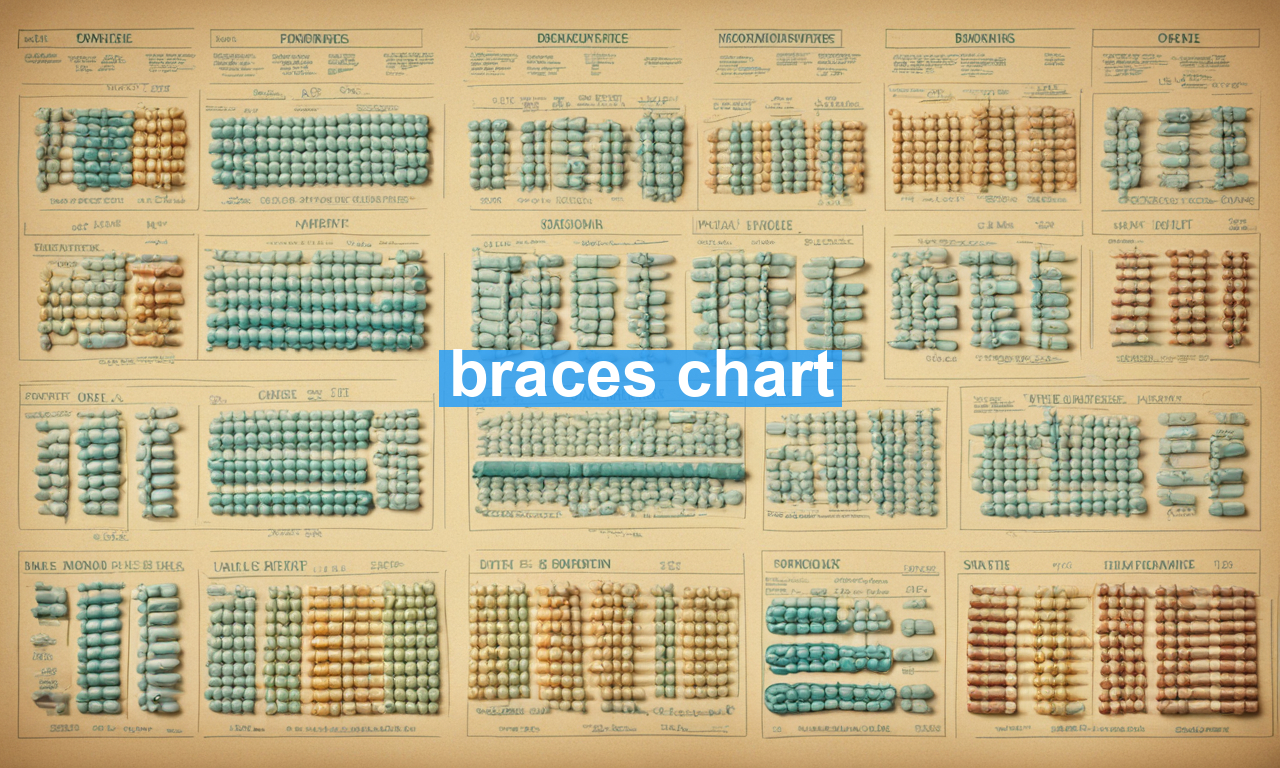Ever find yourself lost in the maze of information about braces? You’re not alone! In this article, we’ll demystify the braces chart to give you an easy-to-understand guide on everything you need to know. From the different types of braces available to their respective pros and cons, we’ve got you covered. And yes, we’ll answer all those questions you’ve been too shy to ask!
Understanding the Brace Chart
A braces chart is essentially a roadmap to your orthodontic treatment. It’s a visual representation that helps your orthodontist plan and track the progress of your teeth alignment. Let’s break down how to read and understand this crucial tool.
Different Types of Braces
First off, let’s talk about the various types of braces you’ll likely find on a braces chart.
- Metal Braces: These are the traditional, stainless steel braces that most people think of. They are highly effective and generally cost less. They also may offer some funky color options for the rubber bands if you’re looking to stand out.
- Ceramic Braces: These are like metal braces but made out of a clear or tooth-colored ceramic material. They’re less noticeable but can be more expensive and prone to staining.
- Lingual Braces: These braces are placed on the backside of your teeth, making them invisible from the front. Lingual braces can be more uncomfortable and are generally harder to clean.
- Invisalign: These clear, plastic aligners are custom-made for your teeth and are removable. While they are nearly invisible, they may not be suitable for severe cases and can be expensive.
How to Read a Braces Chart
Reading a braces chart may seem daunting at first, but it’s simpler than you think. Here are the key elements you should look out for:
- Initial Assessment: This section typically contains information about your initial condition, including the alignment of your teeth and jaw.
- Treatment Plan: This part outlines the steps and methods your orthodontist will use, including the type of braces and duration of the treatment.
- Progress Tracking: Usually updated during each visit, this section helps monitor the movement and alignment of your teeth.
- Estimated Completion: A rough timeline for when you can expect the braces to come off.
Common Questions About Braces
Let’s tackle some frequently asked questions that patients often have about the braces chart and the orthodontic journey.
How Long Will I Need to Wear Braces?
On average, most treatments last between 18 to 24 months. However, the duration can vary based on the severity of your dental issues, the type of braces you choose, and how consistently you follow your orthodontist’s instructions. Want more detailed insights? Check out this detailed guide by the American Dental Association (ADA).
Are There Any Dietary Restrictions?
Yes, you will need to avoid certain foods to protect your braces from damage. Hard and sticky foods can be particularly problematic. So wave goodbye to that caramel popcorn and enjoy softer options like yogurt and pasta instead.
Is It Painful to Get Braces?
Getting braces is a relatively pain-free procedure, although you might feel some discomfort or soreness for a few days afterward. This can usually be managed with over-the-counter pain relievers. Need tips on managing discomfort? Here’s a helpful resource from Mayo Clinic.
Post-Braces Care
Yay, your braces are finally coming off! But wait, there’s more to consider even after the braces phase is over.
Retainers
Once your braces are removed, you’ll probably need to wear a retainer to keep your teeth in their new positions. Initially, you might have to wear it all the time, but eventually, it’ll just be for a few hours each night.
Maintaining Oral Hygiene
Keeping your teeth clean is crucial during and after your braces journey. A potential increase in plaque buildup during treatment can lead to cavities and gum disease if not properly managed. Regular dental check-ups and a thorough hygiene routine can help you maintain a healthy smile. Learn more about effective oral care from the CDC.
The Final Verdict on Braces Charts
The braces chart might seem like an overwhelming cluster of dental jargon and visuals, but it’s your best friend in understanding your orthodontic journey. This comprehensive guide has hopefully given you all the key insights you need to feel more confident about your path to a perfect smile.
Always remember, if you have any concerns or questions, your orthodontist is there to help. They’re the experts, after all. Happy smiling!
For more information, be sure to read up on what to expect during your orthodontic treatment and ways to maintain that brilliant smile for years to come.

